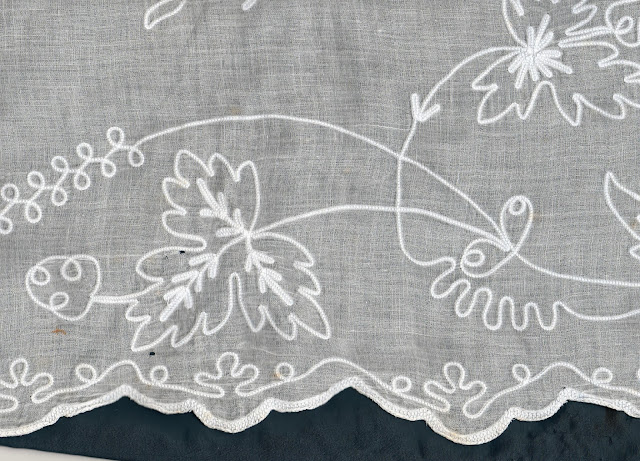IRONING Having ironed literally hundreds of heavy linen sheets as well as mountains of pillow cases, table cloths and napkins, ready for sale, I know how important it is to have all the whites immaculate and smooth and I pass on the following hints: it's most important to have the linen just moist enough so that the very hot iron will smooth it crisp and even. If it is dry one end and a bit too damp the other, i.e. from a washing line, just fold it up into four, aligning all the edges and corners and then roll it very tightly. If it is just perfect, and you haven't got time to do the ironing, you can always put it in the top of a chest deep freezer where it will stay damp (tip from a friend in Texas where the hot wind dries everything very fast!) or store temporarily in a large poly. bag. Do not store linen permanently in poly bags as you are liable to get mildew from the damp that linen absorbs, and that is very difficult to remove.
You can use a hand-spray bottle of clean soft water to mist the ironing all over, but this is quite a lengthy job, so I have my own aid - a large wine bottle filled up and with a cork that I have notched all round and pushed into the bottle so that when I shake it, lots of large drops come out and then I roll the linen up as described above and postpone doing the work by an hour or two! If your water is very hard, even the best steam irons soon get furred up, so get a can of distilled water (garage) or use it from a defrosted fridge, or dehumidifier, (it stores quite well but label it NOT for drinking) when it will have no chalk or lime in it and leave no deposits inside the iron's water tank which then block the little steam vents.
I hardly ever use starch, as it tends to yellow with age, but it is very useful for collars and cuffs, and if I am using one of my best sheets with lace and embroidery on the top fold-down border, I just dip that part in so it stays looking good when the bed is slept in and gets very rumpled. An exception is to starch the French fine muslin cornelli window nets lightly which would otherwise hang very limply and absorb too much dust and smoke from the air. I am not sure about the spray-on liquid starches - I have a feeling that they are a permanent seal not good for the fibres - rather like the silicon spray-on polishes for old furniture which do not give the wax and oils that antique woods need and are more varnish than food - but I am no chemist.
This is a cornelli muslin curtain, worked on a tambour frame, used to screen windows from, smoke, the dust of the street, sunshine and to give complete privacy. The stitch is done with one hand above the muslin and one below and is a chain stitch and the embroideress follows a pattern drawn with a blue line. This example shows two little pin holes which are the first sign of wear and tear!
Friday, 3 January 2014
Subscribe to:
Post Comments (Atom)



Thank you for all this useful information Elizabeth - I have shelves and baskets of vintage and antique white linens, some of which I am hoping to sell, and have been a bit daunted by the best way of washing and ironing them ready for sale. Your latest post also gives great ideas on taking photos - thank you!
ReplyDelete